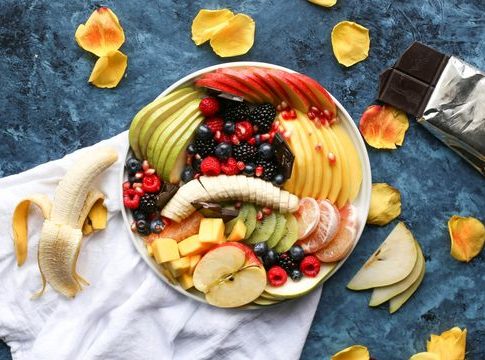Unlocking Satiety: The Science of Food Structure
Food can be more than just fuel; it can be a master key to better health! A tantalizing new study from Imperial College London has cracked the code on how the physical structure of our meals influences not just our tastebuds but also our hormones and feelings of fullness. Ready to dive into this flavor-packed exploration? Let’s dig in!
The Delicious Duo: Intact vs. Broken
Imagine two dishes of chickpeas—both hearty and full of nutrition, yet prepared in shockingly different ways. One bowl boasts intact cellular structures, while the other is a jumble of broken cells. What does this mean for the average eater? A whole lot, as it turns out!
Researchers found that the broken cell chickpea meals sent blood glucose levels soaring faster than you can say “hummus.” In contrast, those alluring, intact cells promised a more prolonged release of gut hormones, GLP-1 and PYY, leading to that coveted sensation of lasting satisfaction.
As different parts of your digestive tract interact with these cell structures, distinct hormones spring into action. The result? A culinary science experiment that lands right in your tummy!
A Delectable Experiment
Let’s set the stage for this captivating study. Picture 10 eager participants, cozied up at the NIHR Imperial Clinical Research Facility. Over the course of four days, they dove into three carefully crafted meals—each lovingly made with fresh chickpea porridge and a splash of luscious, low-sugar blackcurrant jam and raspberry jelly.
Meal Structures:
- Intact-C: Nutrients nestled within cell clusters (think a cozy nest).
- Intact-S: Single cells holding their own delicious treasures.
- Broken: A mash-up of cells, leading to whirlwinds of starch and sugars.
Participants sampled these spirited dishes while researchers monitored their blood samples and appetite levels. Spoiler alert: the results were as delicious as they were enlightening!
The Sweet Science Behind Satiety
Dr. Mingzhu Cai, a star in the field, emphasizes that knowing how and when our bodies release these delightful hormones will pave the way for healthier meal options. It’s not just about enjoying what’s on your plate—it’s about fueling your body for ideal performance.
Imagine crafting your meals with intention, focusing on their structure to not just satisfy your palate but to also control hunger and blood sugar levels. This research lays the groundwork for creating culinary masterpieces that tantalize your taste buds while keeping your body in check.
Moving Forward: An Era of Nourishing Innovation
As we ponder the implications of these findings, one thing is clear: the path to healthier eating is vibrant and full of potential. This study is a wake-up call for food lovers everywhere to appreciate the science behind meal preparation.
Quick Tips to Try at Home:
- Explore Food Texture: Try experimenting with how you prepare familiar foods. Are you mashing, blending, or simply cooking?
- Balance Your Meals: Combine intact foods like whole grains and legumes with broken structures for a meal that’s satisfying and nutritious.
- Pay Attention to Satiety: Notice how different meal structures affect your fullness; take mental notes for future meals.
Get ready to whip up meals that not only delight your taste buds but also make your body sing with satisfaction! Who knew science could be so delicious? Happy cooking—a world of culinary creativity awaits!

Covers wellness, nutrition, mental health, and daily life tips.
Bio: Talia brings a background in health journalism and holistic living to help readers live better, one tip at a time.

